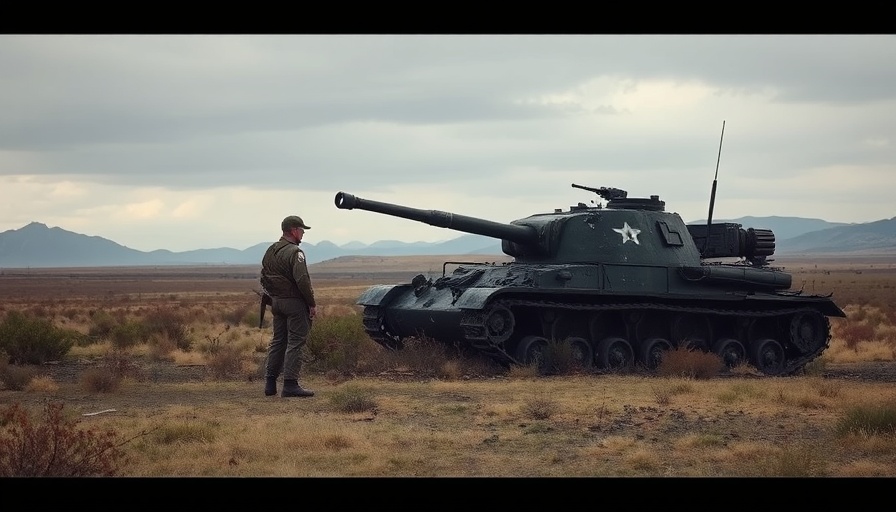
The Heavy Cost of Armor: Understanding the Battle of Kursk
The ongoing conflict between Ukraine and Russia has showcased the evolving landscape of modern warfare, and the battle for Kursk has become a pivotal chapter. Both sides experienced significant losses, highlighting the precarious nature of tank warfare. Recently analyzed data shows that during the eight-month struggle for control of Kursk, both nations accrued nearly identical losses in armored vehicles. Specifically, Ukraine lost 55 tanks while Russia reported a loss of 66 tanks, producing a loss ratio that barely favors the Ukrainians at 1.2-to-1.
The Implications of Losses in Modern Warfare
This battle's outcome holds larger implications for Ukraine's strategy. Historically, the Ukrainian forces needed to inflict three times the losses on their adversaries to strategically weaken the Russian military significantly. However, this notably challenging goal was not met during the battle for Kursk. The capability of sustaining such losses and still maintaining military effectiveness is crucial for Ukraine as the war evolves and the demands on its resources increase.
Current Resources and Future Predictions
As of now, the dynamics of tank replenishment also play an essential role in understanding the conflict. Ukraine initially entered the war with around 1,000 tanks, yet after losing nearly 950 tanks, they've managed to receive aid and reinforcements, allowing them to hover above the 1,000 tank threshold. In contrast, the Russian military, although initially equipped with 3,500 tanks, faces a significant gap as it loses modern vehicles and replaces them with outdated models from storage. This transition hints at a future where Russia's armored capabilities might decay, while Ukraine may increasingly harness more advanced Western-made tanks.
The Battlefield Dynamics at Kursk
The geography of Kursk, defined by dense combat and the proliferation of explosive drones, created a 'graveyard for armored vehicles.' The number of drones piercing through both Ukrainian and Russian defenses has intensified the challenges faced by armored units on the ground. Despite achieving local superiority in some regions previously, the overall combat scenario in Kursk underscores a critical setback for Ukrainian forces. As drone warfare continues to evolve, it raises further questions:
Conclusion and Future Considerations
As we examine the conflict at Kursk, it becomes clear that losses in armored vehicles extend beyond numbers—they reflect strategic capacities and the ability to adapt to a rapidly changing battlefield. What this means for Ukraine's future military engagements remains uncertain, but the vital insight is that sustaining and modernizing their tank corps amidst potential adversary losses will be fundamental. The need for innovation and inventory management is essential in navigating the complexities of modern warfare.
 Add Row
Add Row  Add
Add 




Write A Comment